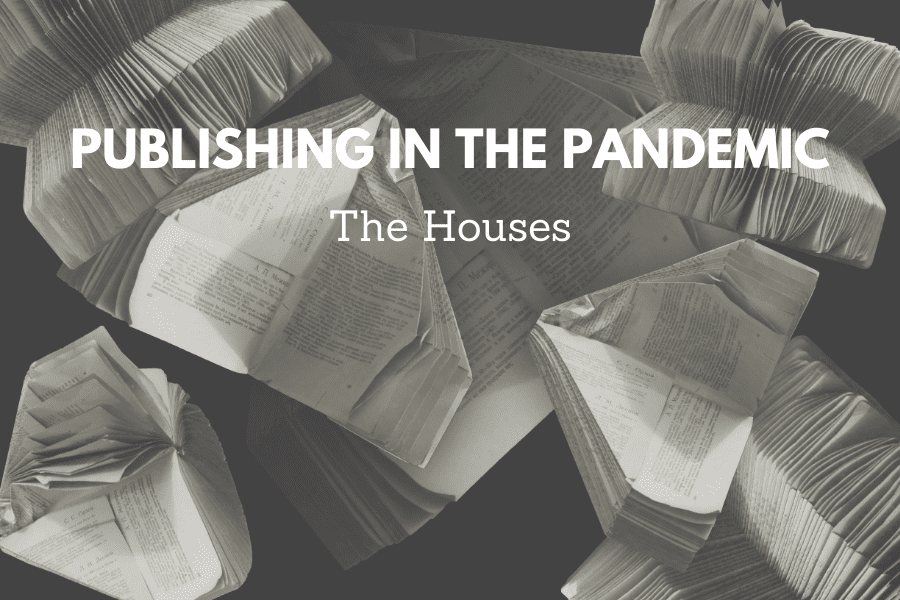
To look at publishing in the pandemic it’s important to know what publishing looked like before the crises hit.
- The first two months of 2020 showed a 3.5% increase in industry sales compared to the first two months of 2019.
- This included a 2.9% increase in adult trade sales from 2019.
- Overall print sales, for both hardcovers and paperbacks, were up approximately 6% from 2019.
- Historically, publishing has been able to endure difficult economic climates. “During the Great Recession and its aftermath […] unit sales fell meaningfully in only one year—2009, when unemployment was peaking—and units rose from 760 million in 2007 to 807 million in 2012.
The Current State of Affairs
So how is the industry currently doing? It’s a mixed bag. Let’s start with the bad news.
The Bad
- Macmillan has laid off an unknown number of its employees, instated a 3 month salary reduction for employees earning more then $60,000, and it’s enacted a hiring freeze.
- Houghton Mifflin Harcourt is enforcing a 4 day work week for all employees, accompanied by a 20% reduction in salary.
- To offset projected losses due to school closures, Scholastic has temporarily closed it’s warehouses and distribution centers in the US. They have also temporaily reduced staff.
- Lagardère (parent company of Hachette Book Group) reported it’s Q1 sales fell 0.8% compared to 2019.
- Sales in top-selling metropolitan areas have fallen, with NYC and San Francisco regional sales down by 5% and 4%.
With a disrupted supply chain and growing unemployment, it’s hard to imagine any good news. However, there have been several areas of growth in the industry.
The Good
- Accoring to Publisher’s Weekly, “Between March 1 and April 4, demand spiked in such categories as outdoor skills (with print units up 74% over last year); medical history, including books on the 1918 flu pandemic (up 71%); games and activities (up 42%); and literary fiction (up 10%).”
- This same article reports, “Print unit sales in the juvenile nonfiction and fiction segments are up for March 1–April 4 over the comparable period in 2019, with juvenile nonfiction having done particularly well.”
- Additionally, “Between March 1 and April 4, unit sales in the activities segment (which includes coloring and sticker books) rose 32%; the study aids segment (early learner and middle school math and science titles) rose 83%; and sales of language arts books for young readers (ages four to eight) jumped 98%.”
While these positive numbers are encouraging, it’s difficult to say how the industry will fare going forward. If the Great Recession of the 2,000’s is any indication, we know sales can only persist while an employed workforce exists. With continued closures and the economic uncertainty that accompanies them, it’s possible that unemployment numbers will continue to rise. If that happens, the publishing industry will likely see more dramatic changes in the coming months.
The Ending
With livelihoods at stake, it becomes easy to wish for bookstore re-openings and a return to a more reliable supply chain. However, it’s important to remember why these disruptions exist — to save lives. With our healthcare system overwhelmed and our physicians lacking proper protective gear, we need to continue social distancing and mitigate the risk that shipping our physical products entails.
The two agents in this Letter raise some excellent points about the publishing industry’s role in the pandemic. During this time of crisis we need to push the use of audiobooks and ebooks over print products. It is the safest and most ethical course of action in light of the unsafe working conditions Amazon and FedEx employees have reported. That said, we must do this while finding alternative ways to support booksellers, warehouse workers, and those other members of the Publishing community that have been disproportionately affected by Covid-19.
What are your thoughts on how the industry should move forward? I’d love to hear them in the comments below.
Want to know how bookstores are faring in the pandemic? Check out last week’s post on publishing in the pandemic.




